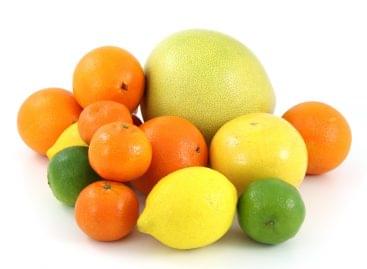Making resilience a part of the new normal in agricultural livelihoods in the Philippines
Before 2011, the Mindanao region of the Philippines was seldom hit by strong typhoons. It was seen as a prime location for agricultural production and attracted several large international companies. However, conditions have been changing drastically over the last five years. Most of the area’s farmers and fishers who never had to contend with extreme weather events are now finding themselves vulnerable to the “new normal.”
In several areas, this struggle is even more pronounced as armed clashes have been forcing families to flee their homes and abandon their livelihoods.
“Our livelihoods are greatly affected every time there is fighting. When we evacuate, we also have to leave our farms and crops like rice and corn,” explained Talamid Madaliday, a farmer in the Municipality of Midsayap.
Noli Calapate, a rice farmer from the Municipality of Aleosan, narrated how extreme weather conditions are affecting the community’s farming activities: “We were affected by drought and sometimes we are not able to plant on time because there is not enough water. During the rainy season, our crops are sometimes damaged too because we cannot control the flooding.”
Both Talamid and Noli are from Cotabato Province in Central Mindanao, one of the most vulnerable areas to natural and man-made disasters. The province also consistently ranks as one of the poorest in the country.
Through a USD 3 million grant from the Government of New Zealand, FAO is helping Mindanao’s farmers and fishers, like Noli and Talamid, to recover their livelihoods and build their resilience to the effects of extreme weather events and armed conflict.
Cotabato farmers get climate smart
FAO’s climate-smart farmer field schools are changing the way communities produce rice, corn and vegetables – crops that have been greatly compromised during the recent drought and flooding.
Through applied learning, these farmer field schools are promoting methods that strengthen resilience. The curriculum includes on-farm training, use of climate information and local weather advisories, technology demonstrations and field days. Practical exercises make up 50 percent of the activities. In this way, trainees are able to observe first hand, brainstorm solutions and analyse agro-ecosystems, and as a result, solve problems related to various challenges.
“We learned new methods like when we went to the seminar about disasters. We were taught how to use the rain gauge, how to fight pests, like rats, black bugs and many others, that destroy our crops,” explained Marie Fe Valeroso, a farmer from the Municipality of Aleosan who participated in the farmer field school.
Addressing farmers in the Municipality of Midsayap, Matthew De Wit, Deputy Head of Mission of the New Zealand Embassy in the Philippines said, “The most important thing about this project is education. Taking advantage of all the information, lessons and knowledge that both FAO and the experts share about how to change agriculture for the better, and then taking those lessons and sharing them with the community – creating a culture of sharing and learning – that’s a really important part of the development and long-term success of the project.”
Agriculture extension workers of the local government also work with FAO in conducting the farmer field schools and gain hands-on experience that will enable them to replicate this activity.
Speaking on behalf of the Philippine Government’s Department of Agriculture, Undersecretary for Special Concerns, Ranibai Dilangalen, thanked FAO and New Zealand: “We look forward to our continued collaboration and cooperation in attaining rice self-sufficiency, and of course, in achieving food security.”
Livelihood recovery
In addition to disaster risk reduction and climate resilience training activities, FAO is also working with the Department of Agriculture and local governments to distribute inputs that will help restart the livelihoods of 10 475 farming and fishing families in the municipalities of Aleosan, Pikit, Midsayap, Kabacan and Pigcawayan. These inputs include rice, corn and vegetable seeds, fruit tree seedlings, fertilizer, drying nets, small farm machinery, post-harvest equipment, livestock and poultry, tilapia fingerlings and gillnets. The project is expected to continue until October 2017.
“We are thankful to FAO and the people of New Zealand. We were taught how to improve our farming and they gave us inputs like rice, corn and chicken,” Talamid said.
“Instead of buying the seeds with our money, we can plant with the seeds that FAO gave us so we can use the money we have to somehow recover from the hardships that El Niño brought to our barangay (village),” Marie Fe added.
Related news
Related news
This is how the Ministry of Agriculture explains the continuous price increase
The Ukrainian threat to oil supplies and US sanctions are…
Read more >Eurostat: the number of guest nights spent in tourist accommodation establishments in the EU continued to increase
The estimated number of nights spent in tourist accommodation in…
Read more >Fruit sales are booming in supermarket chains
With the arrival of the cold months, vitamin supplementation becomes…
Read more >



